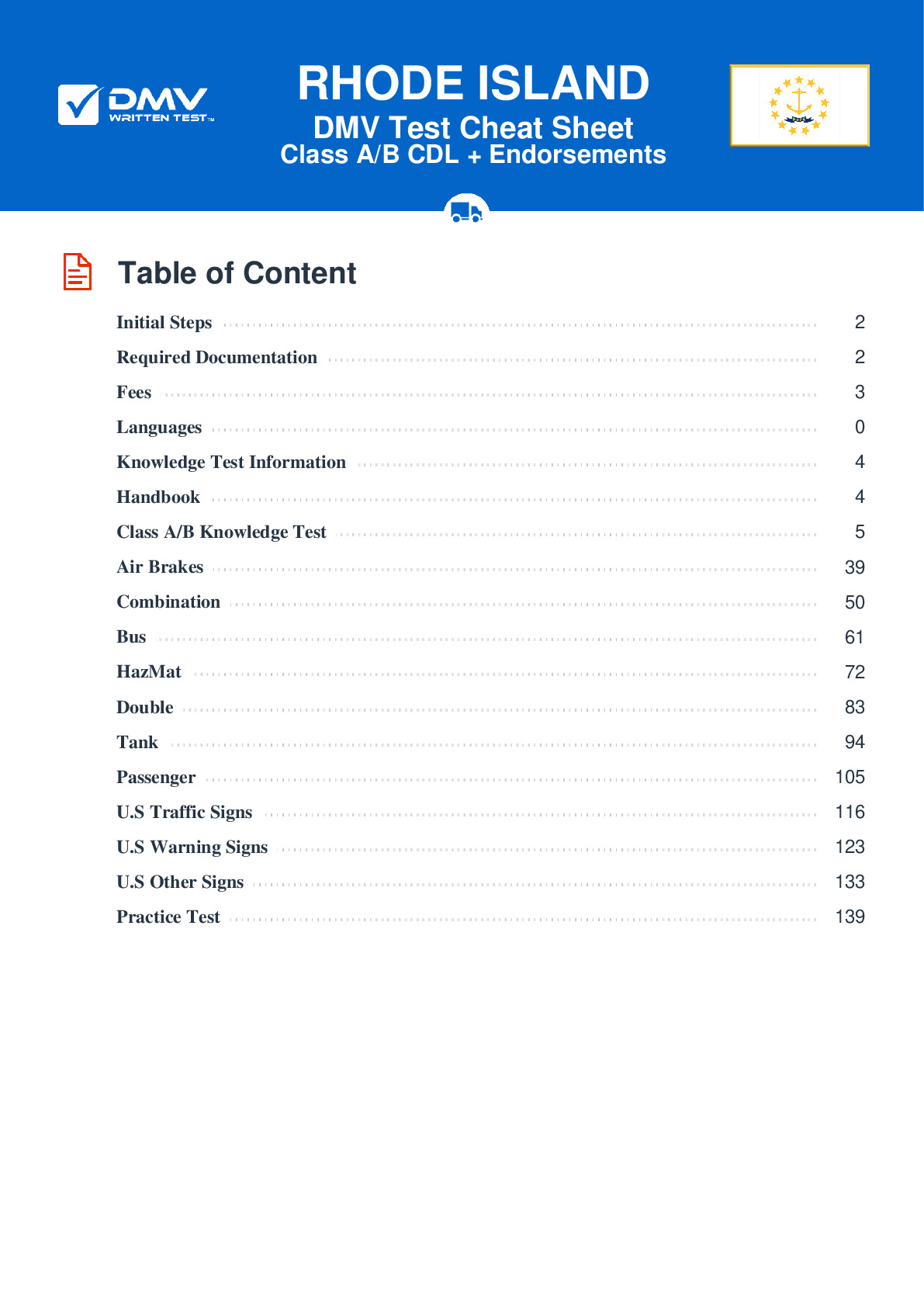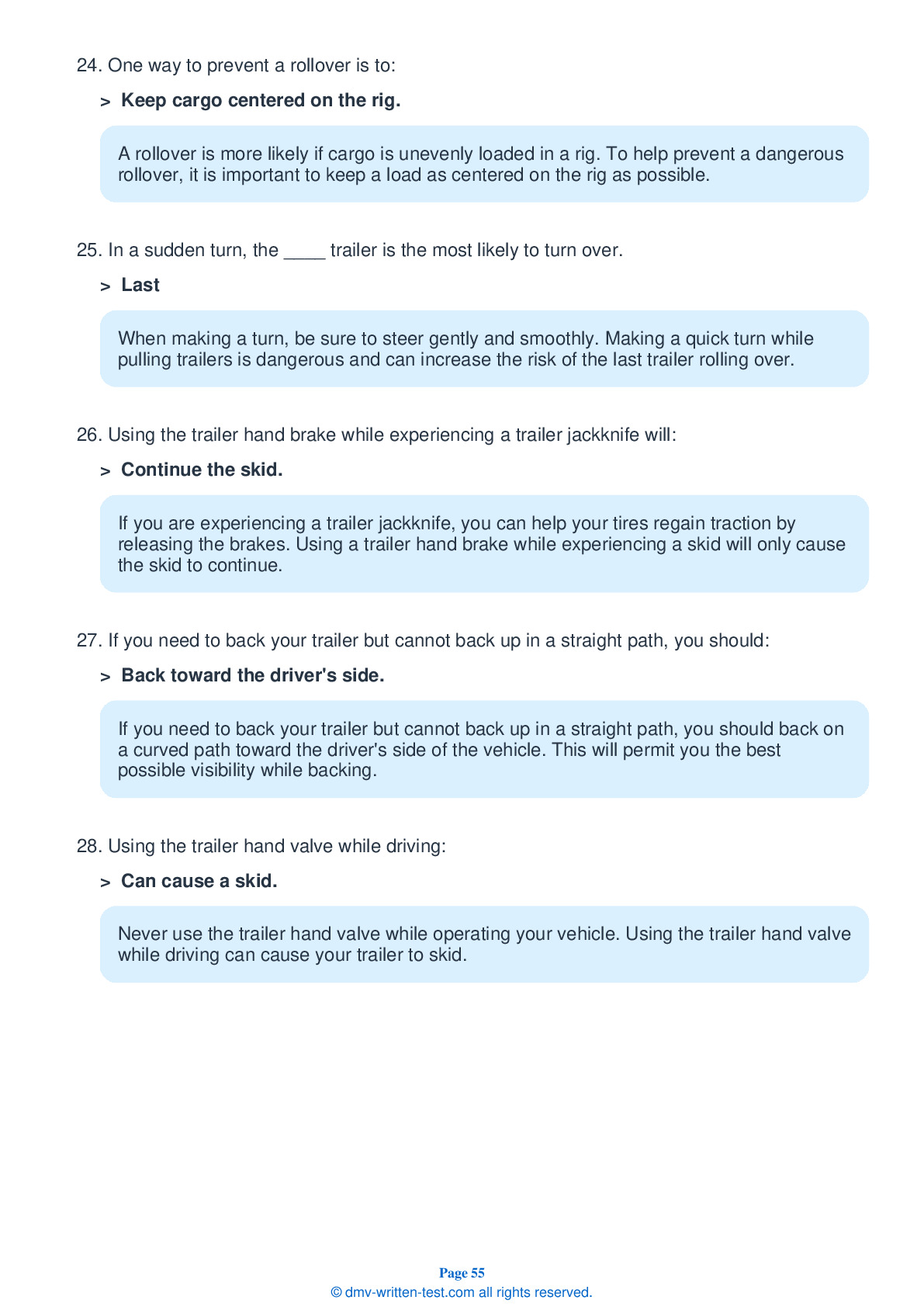Combination
All applicants who are applying for a Class A CDL should be prepared to take the Combination test. This test covers information found in Section 6 of the Commercial Driver License Manual. Section 6 provides the information needed to safely operate tractor-trailers, doubles, triples, and straight trucks with trailers. The test is made up of 20 multiple-choice questions, and applicants will need to correctly answer a minimum of 16 questions to pass. The Combination test is not a replacement for the Double/Triple endorsement test.
Number of Question
Passing Score
1. Older trailers are not equipped with spring brakes. This means that if the air supply for a vehicle's air braking system leaks away:
Explanation
Older trailers do not have spring brakes. This means that if the air supply in an older trailer's air tank has leaked away, there will be no working brakes connected to the trailer and its wheels will turn freely.
2. If your vehicle gets stuck on railroad tracks, you should:
Explanation
If your vehicle gets stuck on railroad tracks for any reason, you should immediately exit the vehicle and walk away from the tracks. Contact the proper emergency authorities.
3. Before a trip, you can make sure air flows to all trailers by:
Explanation
Before a trip, ensure that air in the air brake system reaches all trailers. Do this by waiting for air pressure to build, then sending air to both the emergency and service lines and opening the shut-off valves on the rear of the last trailer. If air escapes from the shut-off valves in the rear of the combination, the air is being supplied to the entire vehicle.
4. When driving a vehicle equipped with an Anti-Lock Braking System (ABS), brakes should be applied:
Explanation
When driving a vehicle with ABS, you should brake in the same manner as you would in a vehicle without ABS.
5. When the wheels of a trailer lock up:
Explanation
A trailer may swing out and strike other vehicles if its wheels lock up. This is especially likely with lightly-loaded trailers.
6. Operating combination vehicles usually requires ____ operating single vehicles.
Explanation
Combination vehicles are usually heavier and longer than single combination vehicles. Operating a combination vehicle requires a higher level of driving skill than operating a single commercial vehicle.
7. If color-coded, which color is used to identify emergency, or supply, lines?
Explanation




